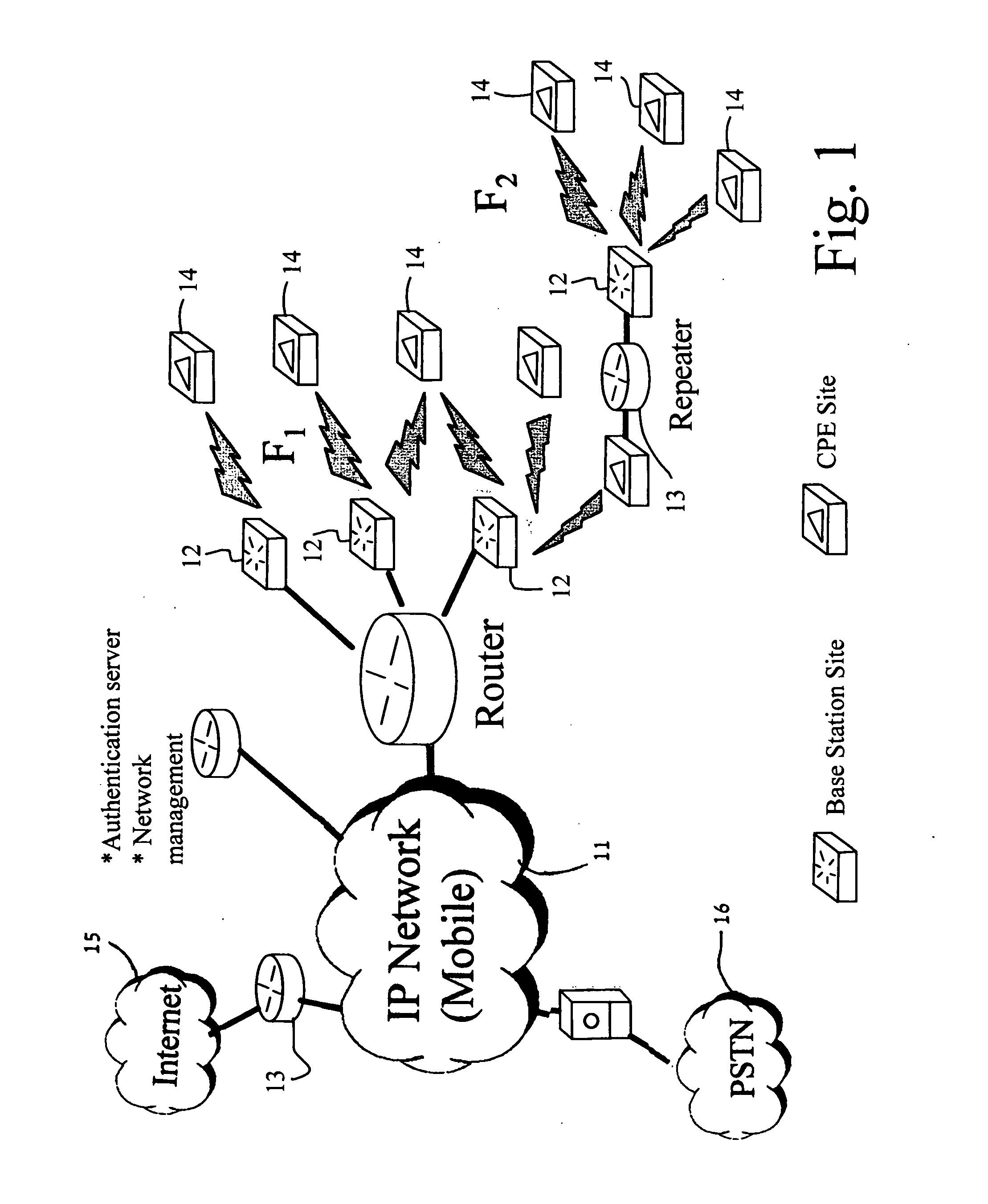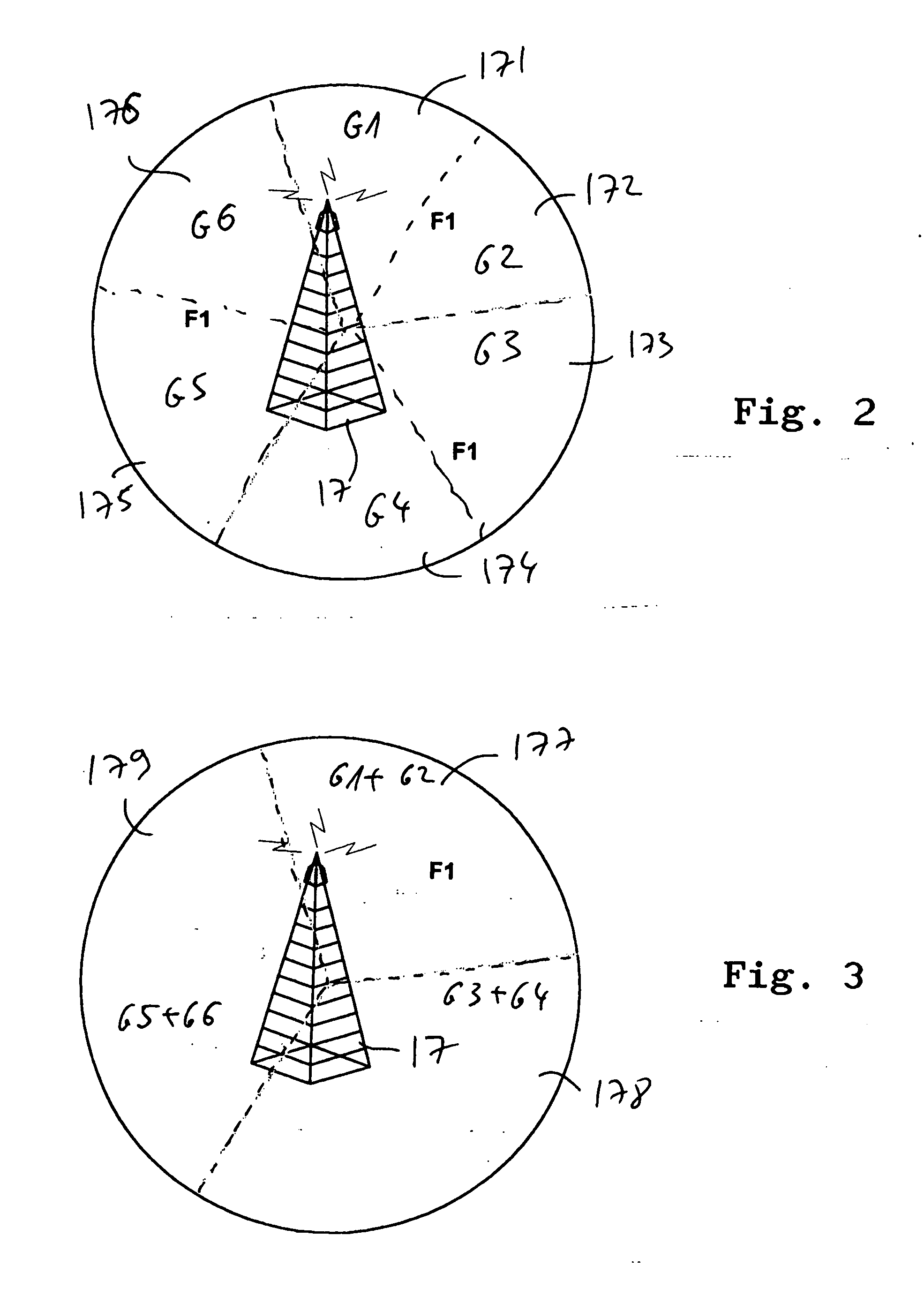Cellular network system and method
a cellular network and network technology, applied in the field of same frequency wireless cellular networks, can solve the problems of limited total allocated frequency bandwidth, increased interference level, and limited bandwidth, and achieve the effect of more efficient spectrum us
- Summary
- Abstract
- Description
- Claims
- Application Information
AI Technical Summary
Benefits of technology
Problems solved by technology
Method used
Image
Examples
Embodiment Construction
A preferred embodiment of the present invention will now be described by way of example and with reference to the accompanying drawings.
The new system and method are applicable both in TDD and FDD.
Reuse of 1 Method
When using a reuse factor which is >1 (regular scenarios defined in the 802.16a) the same physical layer defined in the 802.16a can be used for the 802.16e. To be optimized for mobile operators requirement such as Reliability, coverage, capacity, user location, fully scalability, and mobility from 2-6 Ghz, the system is configured to work in a reuse of 1, which means the same RF frequency is allocated to all sectors in the cell, then enhanced scheme of work is introduced in order to achieve the needed performance (capacity, coverage, etc . . . ).
The system is supporting three levels of reuse 1: asynchronous, Synchronous and Coordinated Synchronous.
1. Where in the Asynchronous case the system using any ref ck for creating the frames in that case each BS is using di...
PUM
 Login to View More
Login to View More Abstract
Description
Claims
Application Information
 Login to View More
Login to View More - R&D
- Intellectual Property
- Life Sciences
- Materials
- Tech Scout
- Unparalleled Data Quality
- Higher Quality Content
- 60% Fewer Hallucinations
Browse by: Latest US Patents, China's latest patents, Technical Efficacy Thesaurus, Application Domain, Technology Topic, Popular Technical Reports.
© 2025 PatSnap. All rights reserved.Legal|Privacy policy|Modern Slavery Act Transparency Statement|Sitemap|About US| Contact US: help@patsnap.com



